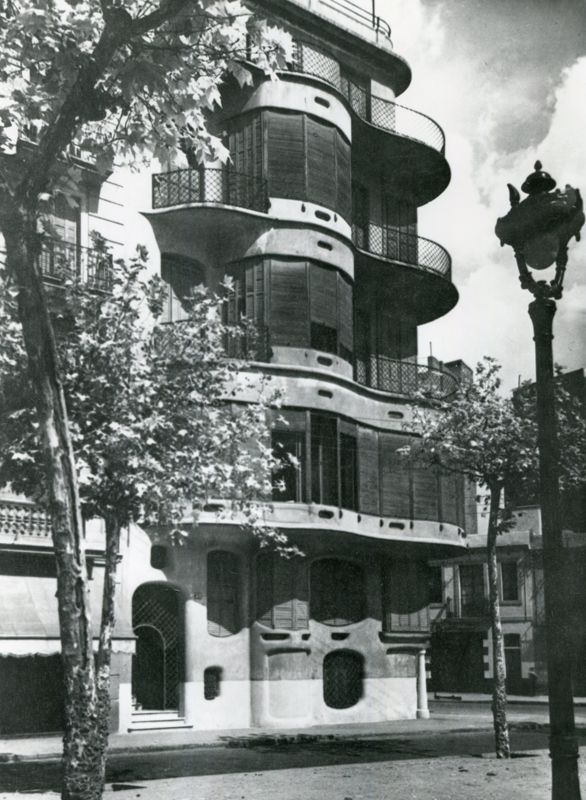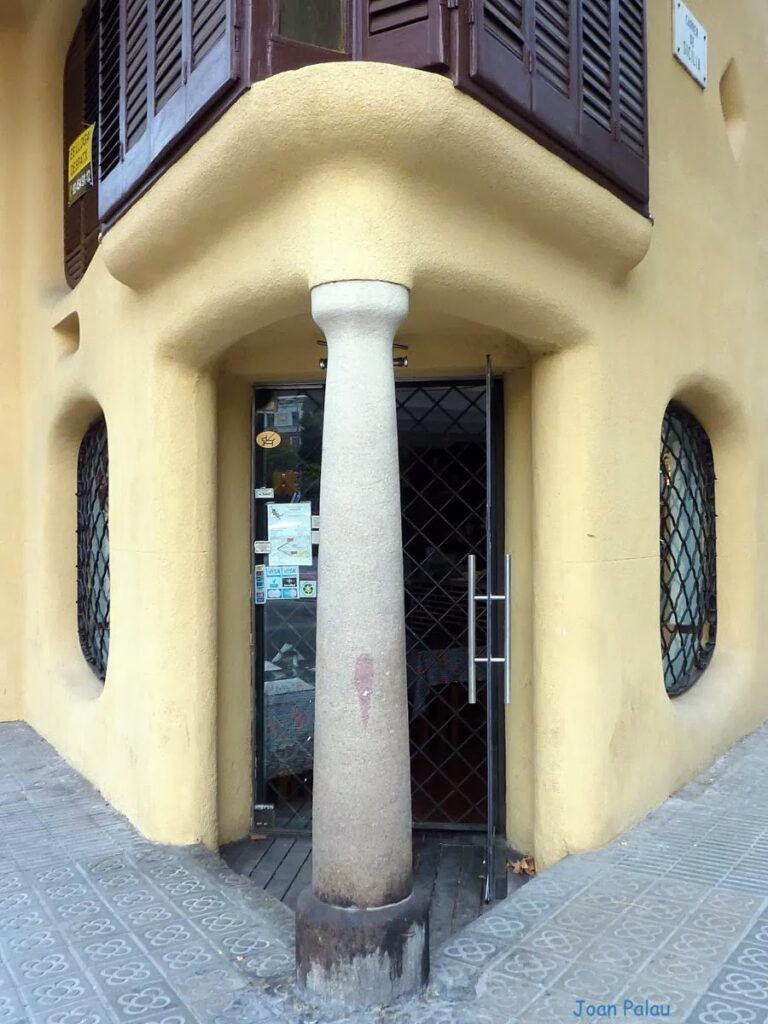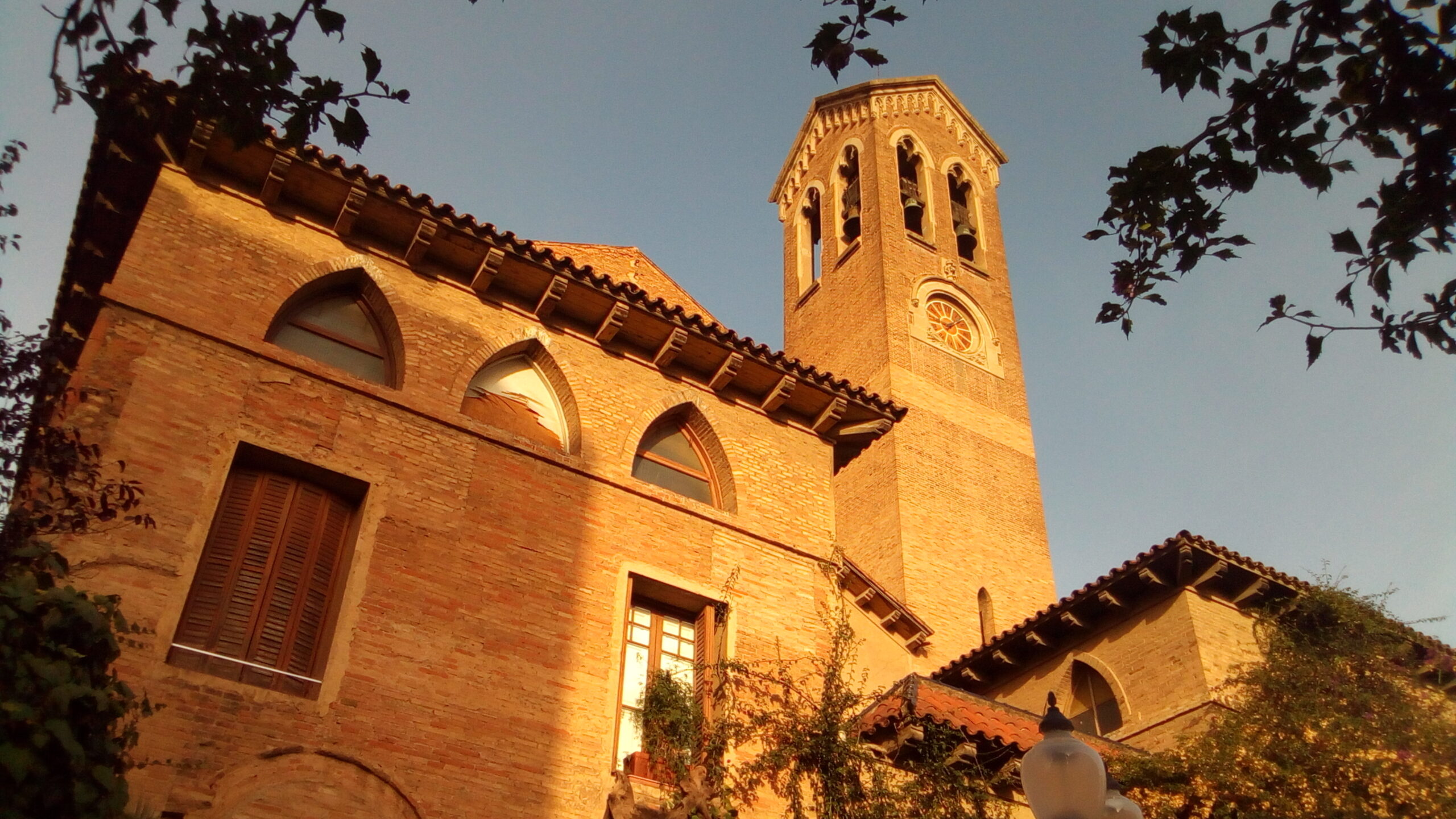Casa Planells, where Gaudí’s influence meets Jujol’s exepressionism
Casa Planells, designed by Josep Maria Jujol Gibert in 1924, is a Modernist building located on Avinguda Diagonal in Barcelona. This small yet innovative structure reflects both the influence of Antoni Gaudí and Jujol's distinct approach to architecture.
- Related to Gaudí
Known for its curvilinear facade and efficient use of a narrow plot, Casa Planells is a prime example of how Jujol adopted and adapted Gaudí’s organic forms and structural techniques. The building combines elements of Modernisme with a touch of Expressionism, making it one of Jujol’s most celebrated works and a hidden gem in Barcelona’s architectural landscape.
Gaudí’s influence on Jujol
To truly appreciate Casa Planells, it’s essential to understand the influence of Antoni Gaudí on Jujol’s work. Josep Maria Jujol Gibert, a key collaborator of Gaudí, worked on several of Gaudí’s most famous projects, including Park Güell, Casa Batlló, and the Sagrada Família. Gaudí’s organic forms, use of color, and innovative architectural techniques had a profound impact on Jujol’s own designs.
Like Gaudí, Jujol believed in the integration of nature and art in architecture. Both architects shared a fascination with natural forms and religious symbolism, which they seamlessly blended into their work. Casa Planells, though smaller in scale than Gaudí’s masterpieces, reflects these shared principles. The building’s curvilinear facade, which seems to ripple like a wave, is reminiscent of Gaudí’s designs, particularly Casa Batlló and Casa Milà.

Techniques and tools: a shared approach
One of the most significant ways Jujol applied Gaudí’s techniques was through his use of handcrafted elements and his attention to detail in decorative features. Like Gaudí, Jujol employed artisans to create intricate ironwork and mosaic pieces, which added a personal touch to his buildings. In Casa Planells, Jujol used wrought iron details in the balconies and windows, similar to the organic, flowing shapes seen in Gaudí’s balconies in Casa Batlló.

Another key similarity lies in their structural innovation. Gaudí was known for using catenary arches and experimenting with geometry, and Jujol followed suit. Casa Planells exhibits a bold structural design that maximizes space within a very narrow plot. The building’s use of curves not only gives it a sense of movement but also speaks to Jujol’s ability to challenge conventional architectural norms, much like Gaudí.
Casa Planells: Modernisme and Expressionism
While Casa Planells draws clear parallels with Gaudí’s work, it also showcases Jujol’s personal style, particularly his interest in Expressionism. Unlike Gaudí, whose designs were often grounded in nature, Jujol’s architecture introduced a more emotional, almost abstract element. The curved facade of Casa Planells is not just a functional design choice but also an artistic statement, reflecting the movement and fluidity that defined Expressionist architecture.
Jujol’s use of color was another key element that linked him to Gaudí’s architectural style. Gaudí frequently used vivid colors in his buildings, most notably in the trencadís mosaics of Park Güell. Jujol applied this technique in his own way, using colored tiles and ceramics to bring life to his designs. The interior of Casa Planells features colorful details and an expressive, handcrafted aesthetic, much like the interior of Gaudí’s Casa Vicens.




Casa Planells may not be as well-known as some of Barcelona’s other architectural landmarks, but it remains a crucial part of the city’s modernist heritage. Josep Maria Jujol Gibert’s collaboration with Gaudí left a lasting imprint on his architectural philosophy, and Casa Planells serves as a prime example of this influence. With its organic forms, structural daring, and attention to detail, the building stands as a celebration of the artistic and architectural synergy between Gaudí and Jujol. It also highlights how Jujol carved out his unique identity, blending Modernisme with Expressionist touches to create something truly original.









